Europe’s rich history is a mosaic of cultures and traditions, with the Slavic people standing as one of its most significant groups. In this exploration, we delve into the intriguing connections between Slavic and Vedic cultures, uncovering linguistic similarities and shared divine concepts that highlight a forgotten heritage.
Table of Contents
The Mosaic of European Cultures
Europe is a vibrant tapestry woven from countless cultures, languages, and ethnicities. From the ancient Celts to the Slavic tribes, each group has left its mark, contributing to the continent’s rich historical narrative. The Slavic people, in particular, have played a pivotal role in shaping the cultural landscape of Europe. Their journey from Eastern Europe to vast territories across the continent illustrates a legacy of resilience and adaptation.
Who Are the Slavic People?
The Slavic people represent one of the largest ethnic groups in Europe, with a rich history spanning over fifteen centuries. They are primarily categorized into three main groups: the East Slavs, which include Russians, Ukrainians, and Belarusians; the West Slavs, encompassing Poles, Czechs, Slovaks, and parts of Germans; and the South Slavs, including Serbs, Croats, Bosnians, and Slovenes. This diversity reflects a complex interplay of languages, customs, and traditions, with Russia, Ukraine, and Poland accounting for approximately sixty-five percent of the global Slavic population.
The Linguistic Ties: Indo-European Roots
The Slavic languages belong to the Indo-European family, a linguistic group that also encompasses languages spoken in the Indian subcontinent. This connection opens a fascinating dialogue about the shared roots of these languages. At the core of this exploration is Sanskrit, the ancient language of India, which serves as a mother root for many languages, including those in the Dravidian family. The similarities in vocabulary between Slavic languages and Sanskrit illustrate this deep-rooted connection.
Key Linguistic Comparisons: Russian and Sanskrit
To understand the linguistic ties, let’s examine some basic vocabulary. The word for fire is ogon in Russian and agni in Sanskrit. Water translates to voda in Russian and udaka in Sanskrit, which is also the origin of the word vodka. Similarly, air is wozuk in Russian and vayu in Sanskrit, while sky is nebo in Russian and nabaha in Sanskrit. These examples highlight the striking similarities, suggesting a common linguistic ancestry that transcends geographical boundaries.
The Meaning of ‘Slavic’
The term ‘Slavic’ itself is derived from the word Slava, which means great or glorious in Russian. This aligns closely with the Sanskrit term Shravaha, which also conveys notions of glory and honor. The shared linguistic roots emphasize a profound historical connection, suggesting that the identity of the Slavic people is steeped in a legacy of honor and distinction.
Divinity in Language: Bog and Bhagga
The exploration of linguistic ties leads us to the realm of divinity. The Russian word for God is bog, while the Sanskrit equivalent is Bhagga. Both terms reflect a conceptualization of divinity that resonates with the idea of a higher power, encapsulating notions of fortune and blessings. This parallel not only illustrates linguistic similarities but also highlights cultural concepts related to divinity.
Native Cultures Before Christianity
Before the spread of Christianity, Europe was home to a multitude of native cultures, each with its own beliefs, traditions, and pantheon of deities. The Slavic people practiced their own indigenous religions, rich with folklore, rituals, and gods. The arrival of Christianity was not merely a cultural exchange; it often involved the forceful imposition of beliefs that sought to erase these ancient traditions. The Slavic pantheon, therefore, represents a vital aspect of European heritage, one that deserves recognition and respect.
Cultural Connections: Shweta and Shwetlana
In exploring cultural connections between the Slavic and Indian civilizations, we find intriguing parallels in names and meanings. The name Shweta in Indian cultures translates to ‘white,’ while its Slavic counterpart, Shwetlana, carries the same meaning. This linguistic similarity reflects deeper cultural ties, suggesting a shared understanding of nature and identity.
Sviatovid: The Four-Faced God
Sviatovid, the revered four-faced god of the Slavic pantheon, embodies the intersection of knowledge, war, and divination. His name, derived from Sviat (white) and vid (knowledge), resonates with the Indian concept of divinity. The worship of Sviatovid, particularly in regions like Poland and the Czech Republic, underscores the enduring legacy of ancient Slavic beliefs. The symbolism of his four faces reflects the multifaceted nature of divinity, akin to the representations found in Hinduism.
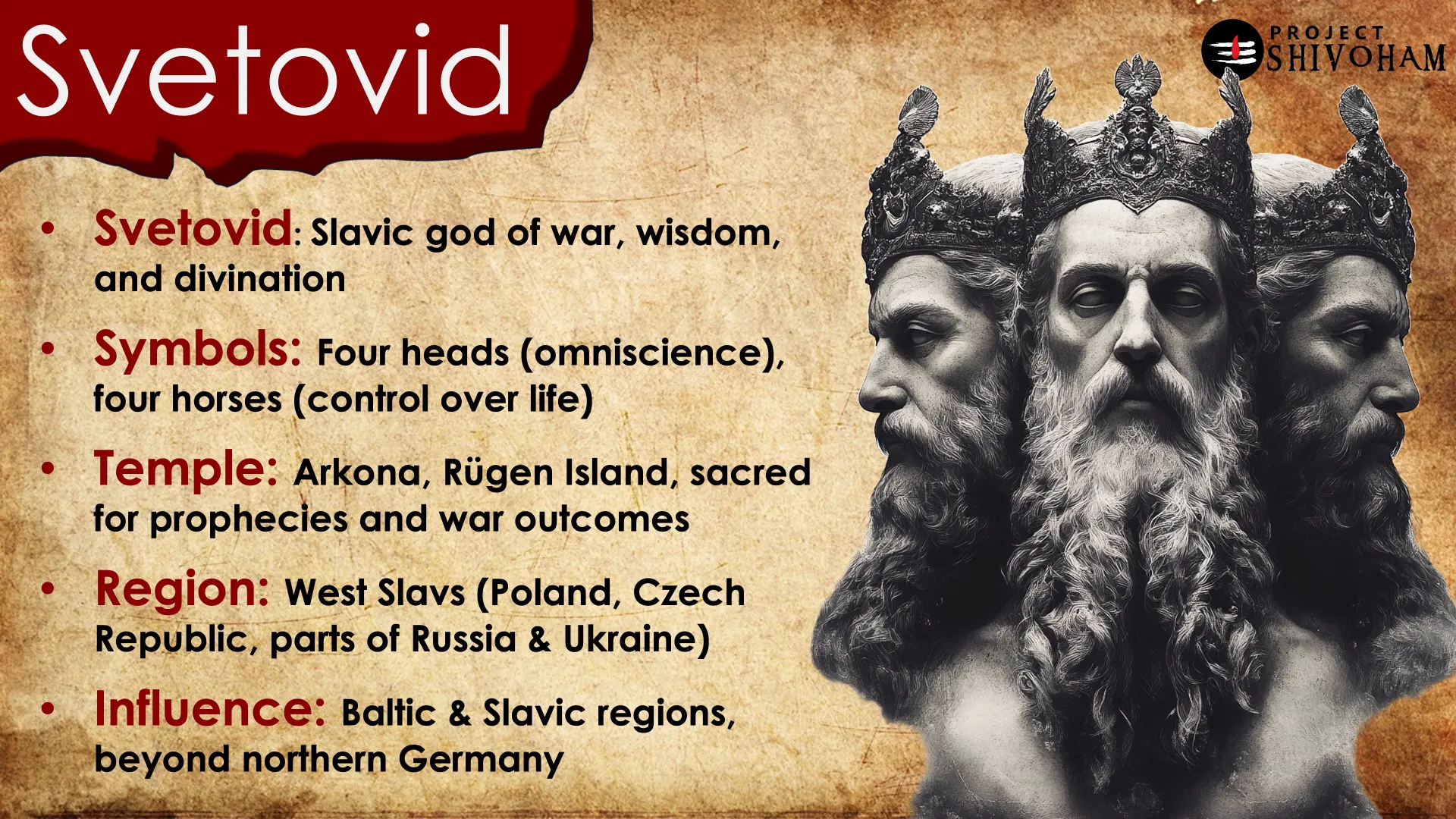
Conclusion
The exploration of the Slavic pantheon reveals a rich tapestry of deities, each with unique attributes and cultural significance. From Perun, the god of thunder, to Mokos, the goddess of earth and fertility, these figures illustrate the profound connections between nature, humanity, and the divine. The Slavic gods share remarkable similarities with their Vedic counterparts, revealing a broader cultural significance that transcends time and geography.
Revival of Slavic Traditions
In recent decades, there has been a resurgence of interest in Slavic traditions, as communities strive to reconnect with their cultural roots. This revival is evident in festivals like Kupala Night, which celebrates the summer solstice with rituals focused on fire, water, and fertility. Such celebrations not only honor ancient practices but also foster community bonds and a sense of identity among the Slavic people.
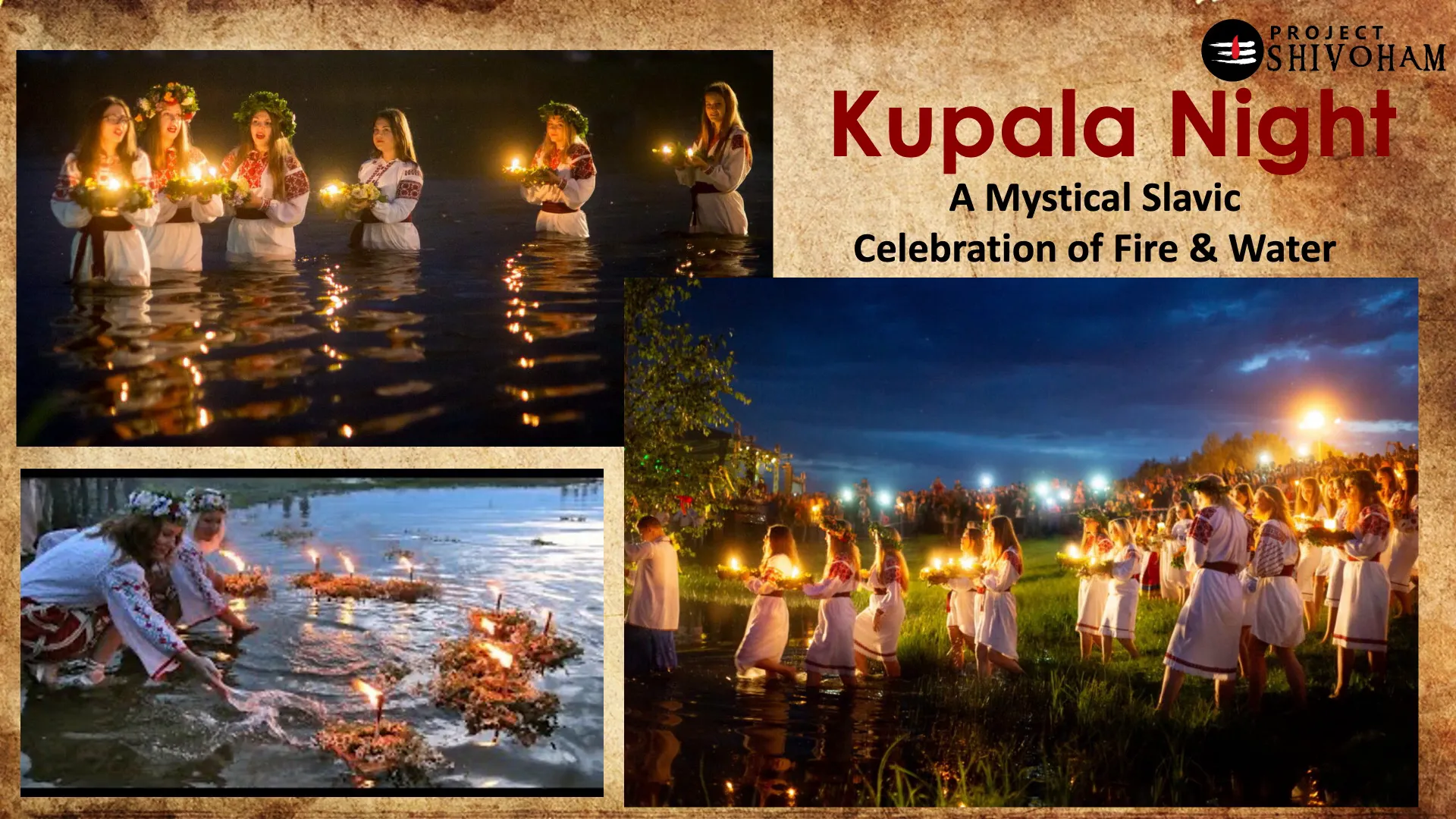
The revival of these traditions illustrates the resilience of the Slavic spirit, as people seek to reclaim their heritage and celebrate their rich cultural tapestry. This journey back to cultural roots is not just a personal endeavor; it’s a collective movement towards embracing a vibrant and diverse identity that celebrates life, nature, and community.
Perun: The God of Thunder
Perun stands as the highest deity in the Slavic pantheon, revered as the god of thunder, lightning, war, and justice. His portrayal as a mighty warrior with a fiery axe symbolizes strength and protection. The temples dedicated to Perun were significant in ancient Slavic regions, particularly in Ukraine and Russia, where he was worshipped as the protector of the heavens.
In many ways, Perun parallels the Vedic god Varuna, sharing attributes that reflect their roles as guardians and enforcers of cosmic order. The reverence for Perun illustrates the Slavic people’s deep connection to nature and their understanding of the elemental forces that govern their world.
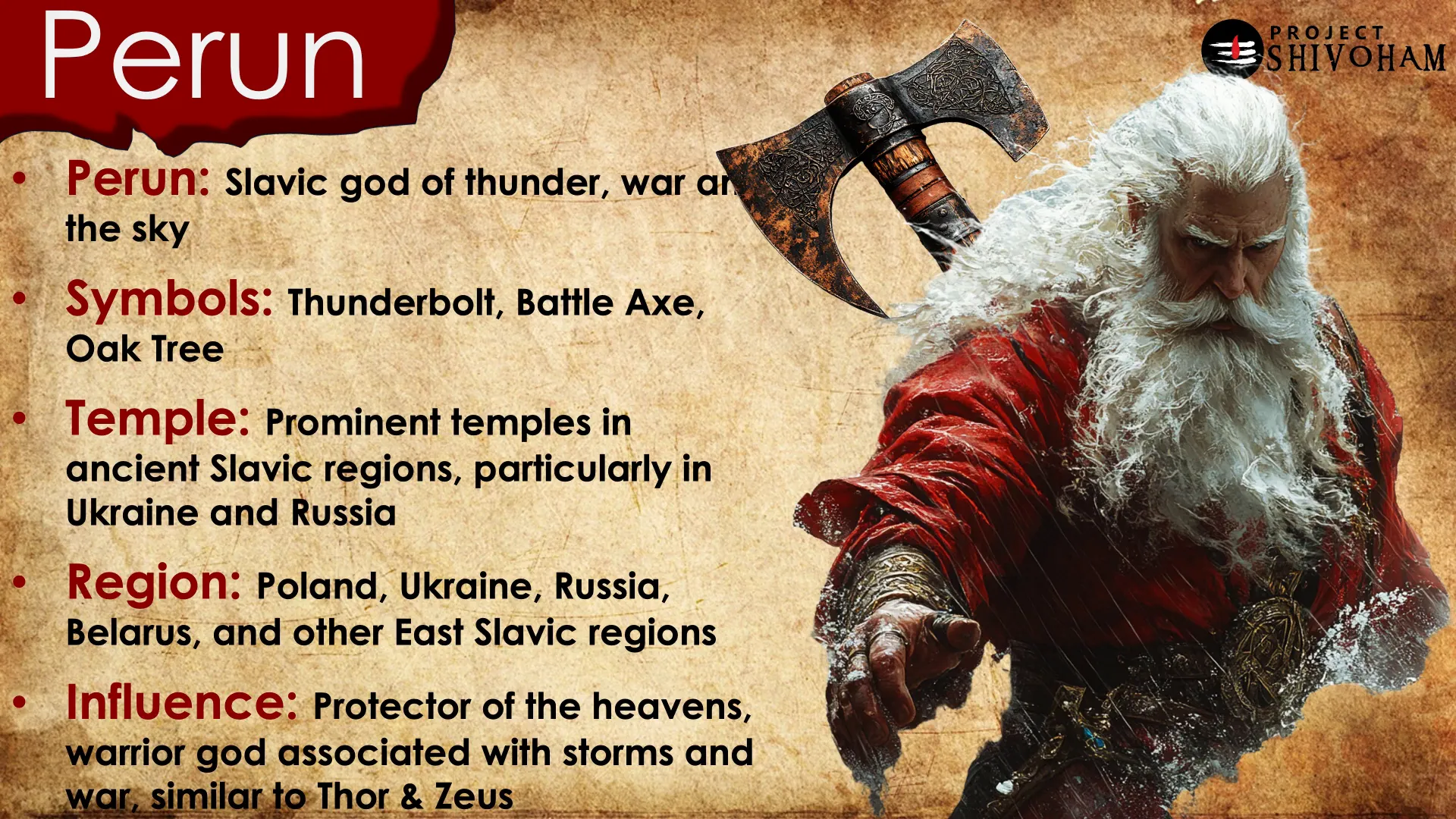
Mokos: The Goddess of Fertility
Mokos is a prominent goddess in Slavic mythology, associated with earth, fertility, water, and women’s fate. Often depicted as a nurturing figure, she oversees childbirth, spinning, and weaving, embodying the essence of femininity and the cycles of life. The name Mokos resonates with the idea of nurturing as she acts as a protector of women.
Though the similarity in name with the Sanskrit term “moksha” is intriguing, Mokos holds her distinct place in Slavic tradition, akin to the goddess Bhudevi in Hinduism. The reverence for Mokos highlights the Slavic culture’s respect for feminine power and the natural world.
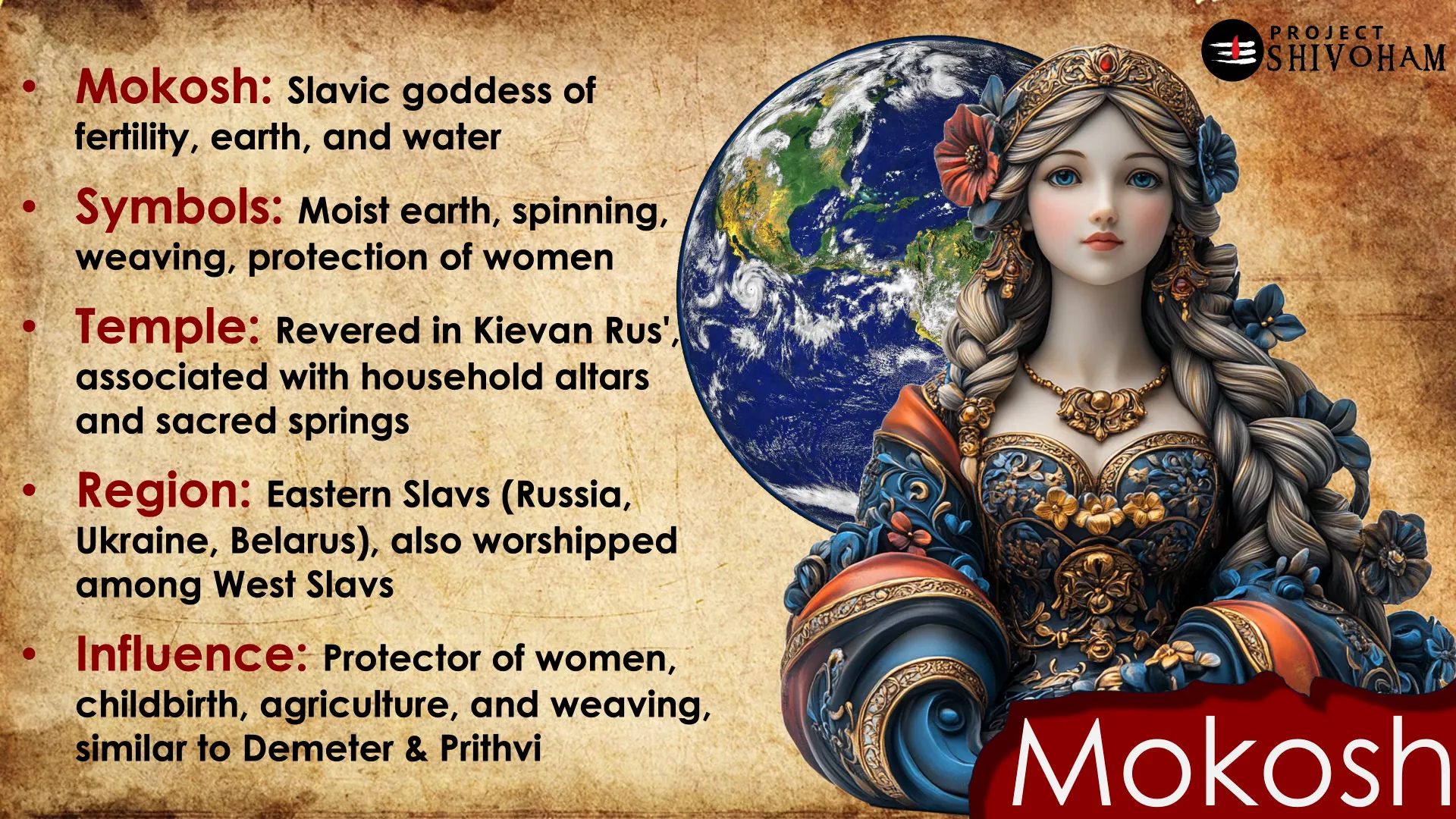
The Trio of Zoria Goddesses
The Slavic pantheon includes the trio of Zoria goddesses: Zoria Utreynaya, Zoria Veechernaya, and Zoria Polunoshnaya. These goddesses represent different aspects of time and light, with Zoria Utreynaya as the goddess of dawn, Zoria Veechernaya as the goddess of dusk, and Zoria Polunoshnaya as the guardian of the midnight sun. Their worship reflects the Slavic people’s connection to celestial cycles and their reverence for the sun’s life-giving power.
Each goddess plays a vital role in the natural order, symbolizing the transitions between day and night. This triadic representation of divinity underscores the Slavic understanding of balance in nature and the importance of each phase in the cycle of life.
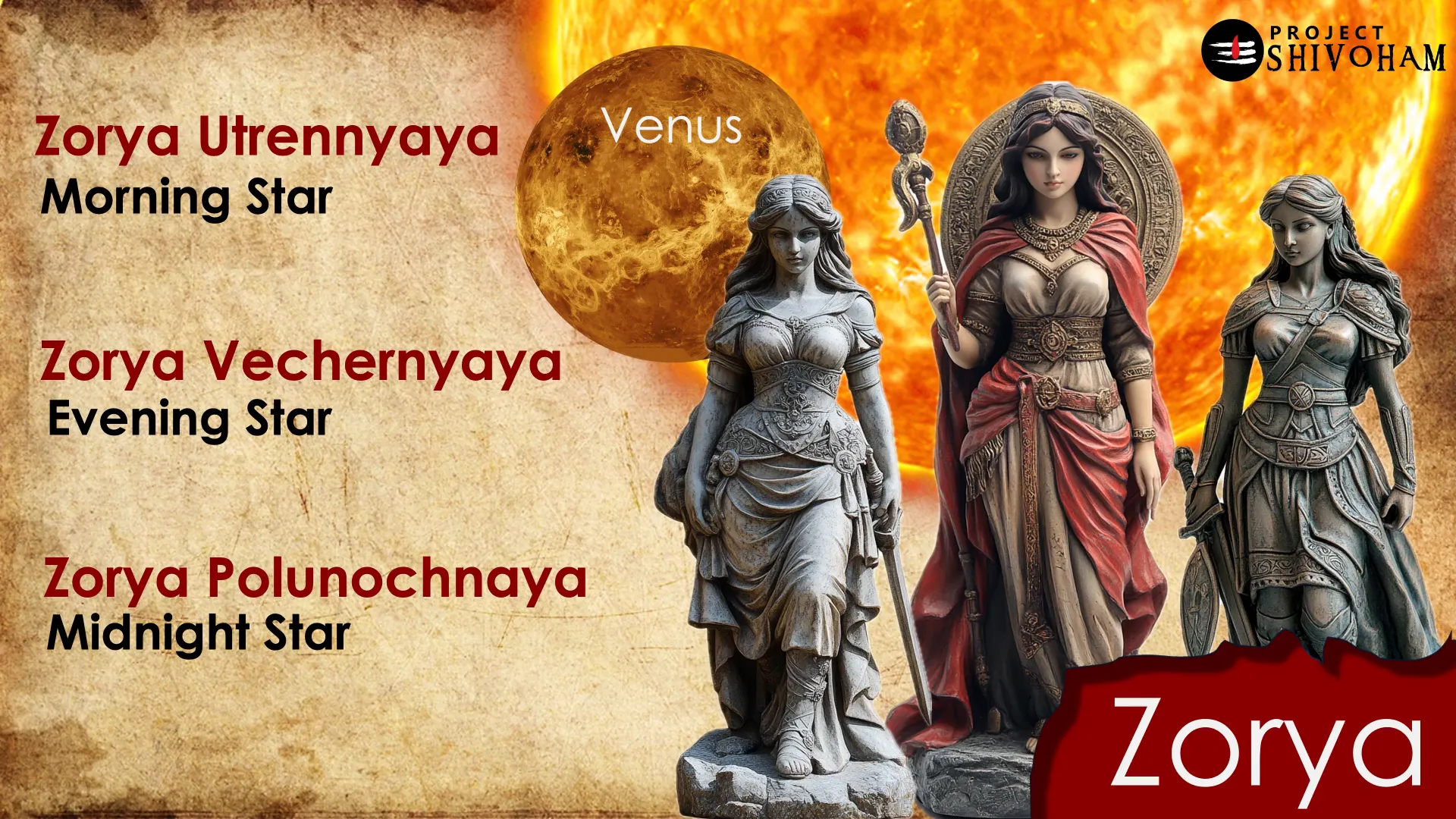
Dasbog: The Sun God
In Slavic mythology, Dasbog is celebrated as the sun god, embodying the life-giving force of the sun. The name Dasbog translates to “God that gives,” reflecting the dual meaning of “das” (to give) and “bog” (god). This etymological connection highlights the significance of the sun in agricultural societies, where the sun is seen as a provider of life and sustenance.
Dasbog’s worship illustrates the Slavic people’s appreciation for nature’s cycles and their understanding of the sun as a central figure in their cosmology, akin to the role of Surya in Hinduism.
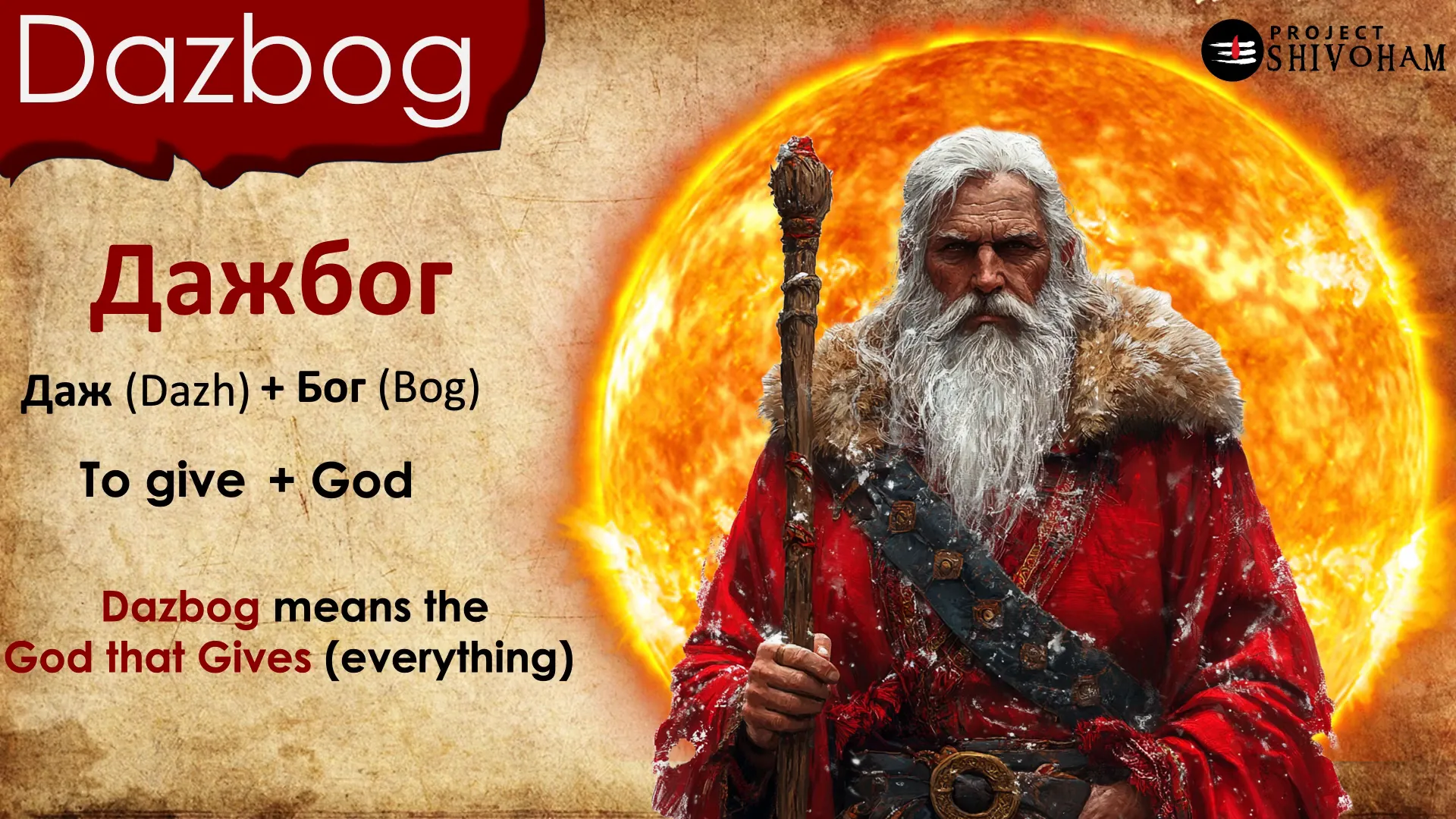
Triglav: The Three-Headed God
Triglav, a significant deity in the Slavic pantheon, is depicted with three heads, each representing different realms: heaven, earth, and the underworld. This triadic nature symbolizes the unity of time, fate, and divine power, showcasing how the Slavic beliefs integrate various aspects of existence into a cohesive whole. Triglav’s worship reflects the complexities of life and the interconnectedness of all realms.
Similar to the Hindu Trimurti, Triglav embodies the idea of a multifaceted deity, emphasizing the cultural significance of triadic representations in both traditions. The mountain named after Triglav in Slovenia further illustrates the lasting impact of this deity on modern cultural identity.
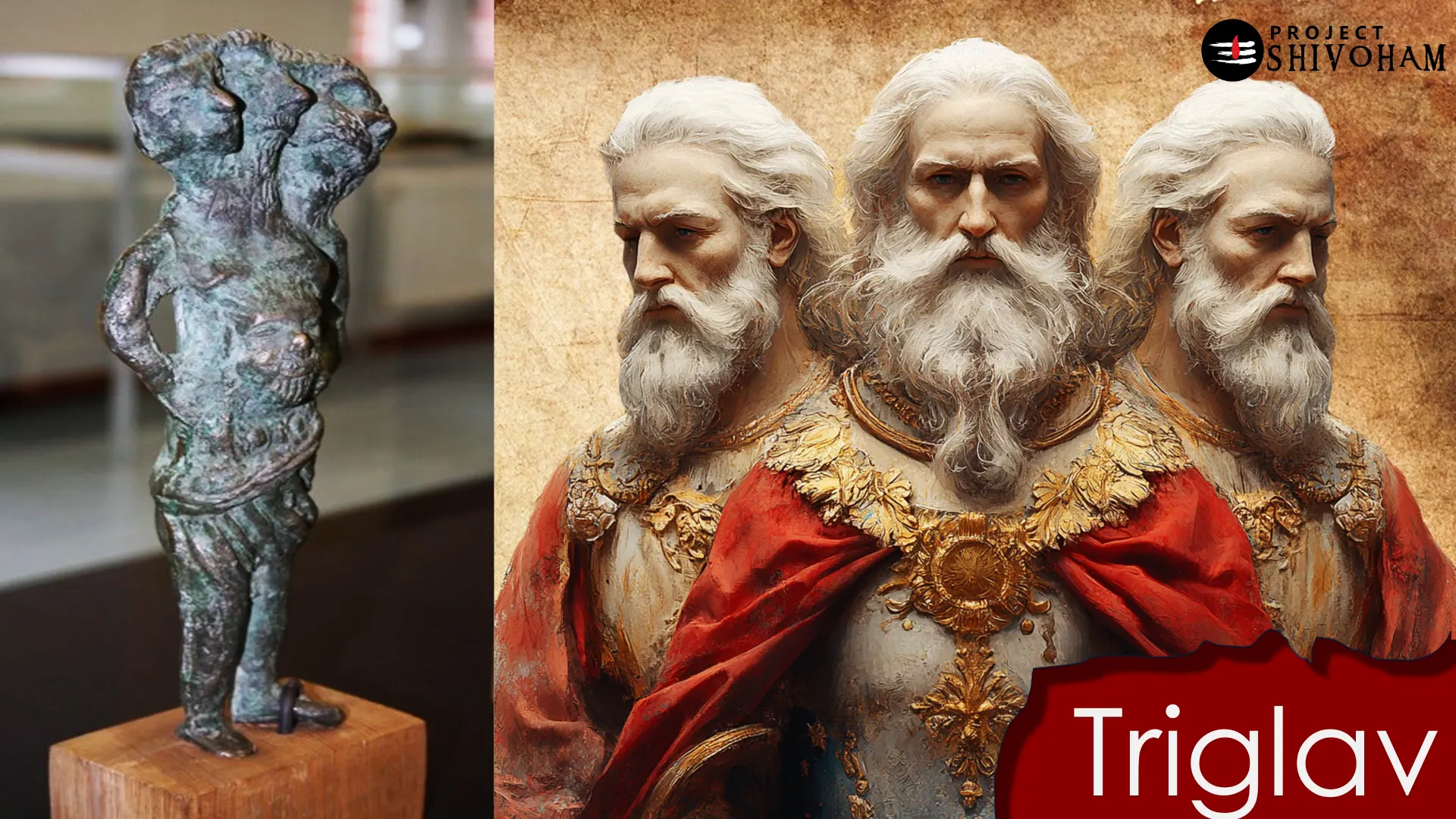
Cultural Revivals and Historical Erasure
Despite centuries of Christian dominance that sought to erase these native traditions, there has been a resurgence in the interest and practice of Slavic cultural heritage. This revival is not merely about nostalgia; it represents a reclaiming of identity and a reestablishment of connections to ancestral beliefs.
As Slavic communities rediscover their ancient practices, they also confront the historical narratives that have long marginalized their spiritual heritage. This cultural renaissance is vital for fostering a sense of belonging and pride in one’s roots.

Kupala Night: A Celebration of Nature
Kupala Night, celebrated around the summer solstice, is one of the most significant rituals in Slavic culture. This festival honors the cycles of nature with ceremonies centered around fire, water, and fertility. Traditionally held on June 23rd and 24th, it involves lighting bonfires that symbolize purification and good fortune.
Participants float wreaths with candles on lakes and rivers, representing love and connection to water spirits. The mythical fern flower, believed to bloom on this night, is said to hold magical powers, further emphasizing the festival’s ties to nature and spirituality. Kupala Night fosters community bonds through dance, song, and the celebration of life.

The Importance of Cultural Diversity
The revival of Slavic traditions highlights the importance of cultural diversity in our global society. Embracing different cultural heritages enriches our collective experience and fosters understanding among diverse communities. By celebrating Slavic traditions, we acknowledge the value of indigenous knowledge and the wisdom embedded in ancient practices.
Cultural diversity not only enhances our social fabric but also promotes resilience in the face of modern challenges. It encourages dialogue and fosters respect for different worldviews, ultimately contributing to a more harmonious coexistence among humanity.
FAQ
What is the significance of the Slavic pantheon?
The Slavic pantheon reflects the deep connection between the people and nature, showcasing their understanding of elemental forces and the cycles of life. Each deity embodies specific aspects of existence, emphasizing the importance of balance and harmony in the world.
How does Kupala Night relate to Slavic traditions?
Kupala Night is a significant celebration that marks the summer solstice, emphasizing themes of fertility, purification, and connection to nature. It is a time for communities to come together, celebrate life, and honor ancestral practices.
Are there similarities between Slavic and Vedic cultures?
Yes, there are notable similarities in linguistic roots, divine concepts, and cultural practices between Slavic and Vedic traditions. Both cultures share a rich tapestry of mythology and spirituality that reflects their respective understandings of the world.
This article was created from the video Vedic & European Slavic Cultural Connections with the help of AI. Thanks to Aravind Markandeya, Project Shivoham.